Best AI Text to Video Models & Templates
Introduction: AI Video Generation Is No Longer Experimental What began as short, unstable demo clips has evolved into production-grade systems…
Sep 13, 2023
Employees usually work overtime because they want to earn extra money, or they want to look good in simple order to get the desired business promotion they need. As a business owner, however, you have to make it clear if your company allows overtime or not, and what rules govern the practice of rendering overtime. For this reason, you need to learn how to create a company policy regarding overtime.

Doing this will ensure that your employees do not abuse the overtime system as well as ensure that they understand when they may perform overtime duty. Here are the steps that should help you make your own overtime business policy. We have also provided some samples to serve as guides while you come up with your company’s own policies regarding overtime. You can also see more on Overtime Sheet Templates.
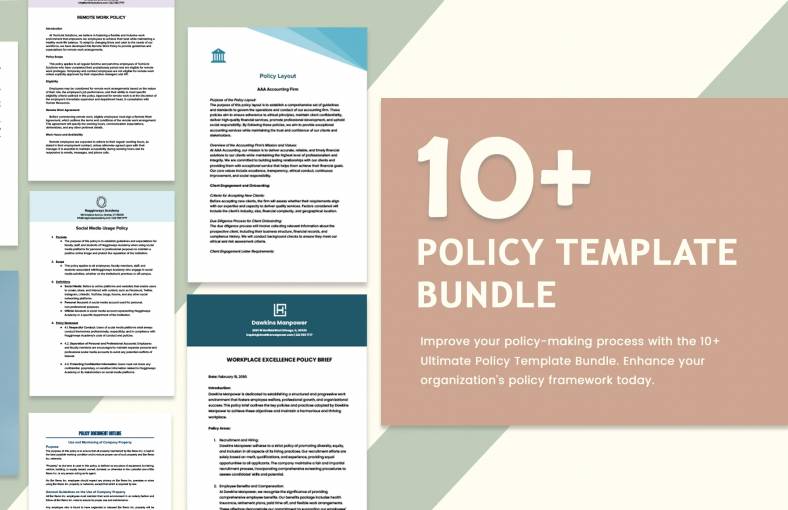
A busy period at work? If so, you’ll probably be thinking of extending your working hours to compensate for your unfinished tasks. If you’re an employer, you’ll probably come across employees who refuse to render overtime. Whether you are an employee who wants to know the policy of working more than your working hours or an employer who wants to emphasize the need for overtime, you can definitely use the above-mentioned overtime policy template for more. Try it out now! You can also see more on Overtime Policy in PDF Format.
Make a list of all the employees and then divide them into exempted and on-exempted employees with regards to their work. This way, it would get easier for you to make the right sample policy needed for all the employees. This will also make it easier for you to know who you have to pay and who you do not have to.
Make it clear as to how much of the overtime is accepted. Also, mention who can permit employees to do their overtime and how can the time be divided in the year. Take a look at overtime policies for more. Make sure that you mention the limitations and rules so that there is no extra use of overtime.
It is very important that you mention all the laws your employees must obey with respect to the overtime duties they want to do. Make sure that they obey the state law by leaning what they are. This would also include reviewing their policies, how much to pay and how to calculate their OT duties.
It is very essential that you restrict the amount of business overtime an employee can work for. So, make sure that you mention the amount of time he/she can work for extra. hence compensating for their unfinished targets, tasks, and leaves taken without notice. Also, specify how you would be paying for this work done, and also, how much. Mention what are the rules and regulations for them to work during the weekends and also, special holidays.
Create a written simple policy that outlines everything needed and related to overtime. Make sure that the policy is inclusive of everything, but keep it short and simple to understand. Add all the exceptions and rules, and make sure that all your employees receive a copy. See that they do not abuse their overtimes and make correct use of them. You can also see more on Overtime Templates.
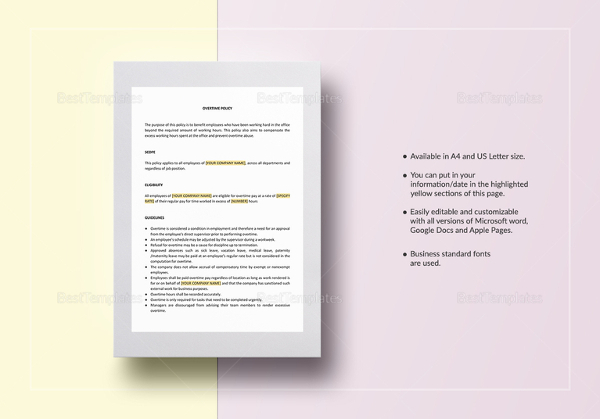
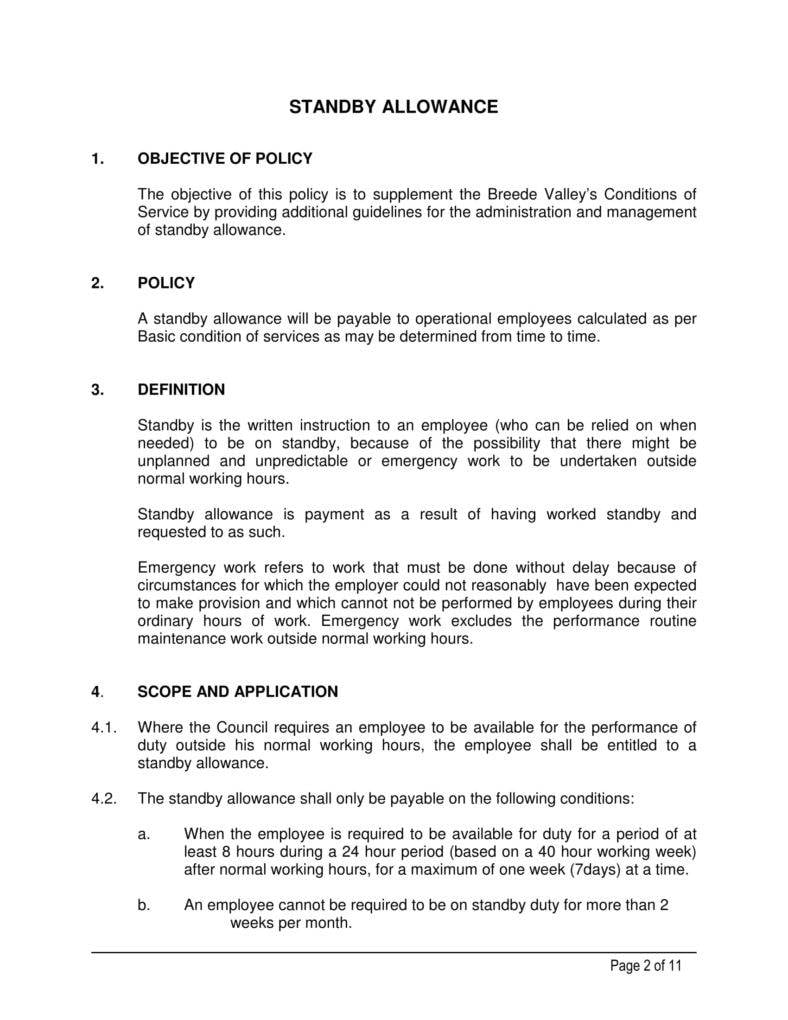
bvm.gov.za
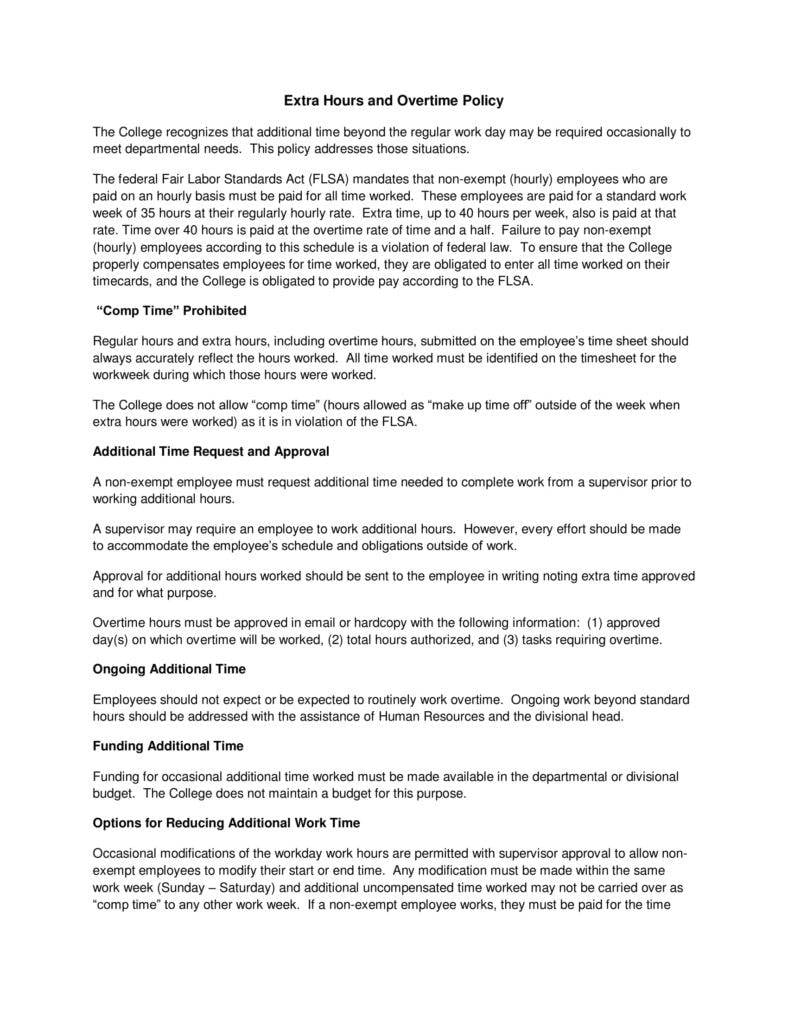
hampshire.edu
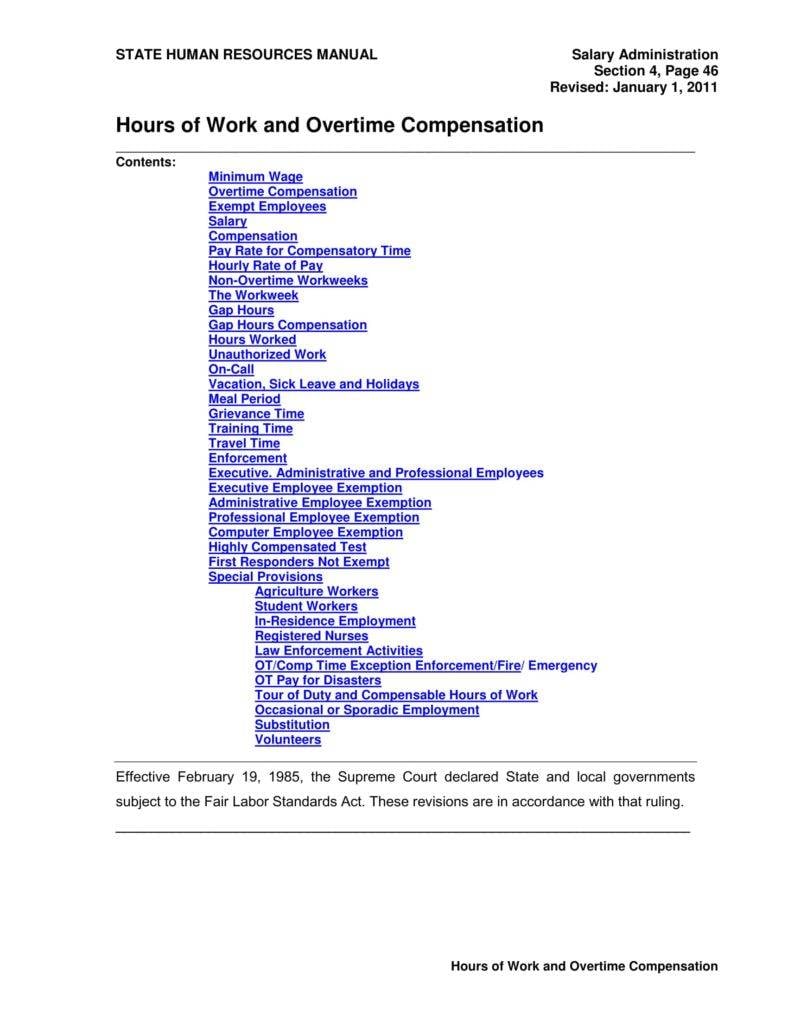
files.nc.gov
Some employees, by virtue of their compensation plan packages, are deemed ineligible for receiving overtime pay. All you have to remember is that non-exempt employees are allowed to be paid for overtime while those who are exempt cannot be paid for any overtime for employee work. Here are some examples of employees who are typically not paid for overtime work:
As stated before, there are some employees who are willing to abuse the overtime system so they can earn extra money without putting in the required amount of work schedule. So, to prevent this from happening, you can have general managers approve the requests of employees to work overtime. Make sure that the limitations and rules set in place are enforced fairly.
This is something you need to do as it is very crucial. Go through the current small business policy on the amount of overtime that employees are allowed to render, how much you should pay them, and how to calculate the payment based on the employee’s contract and duties performed. These laws can vary from country to country and state to state, so make sure that you read up on them.
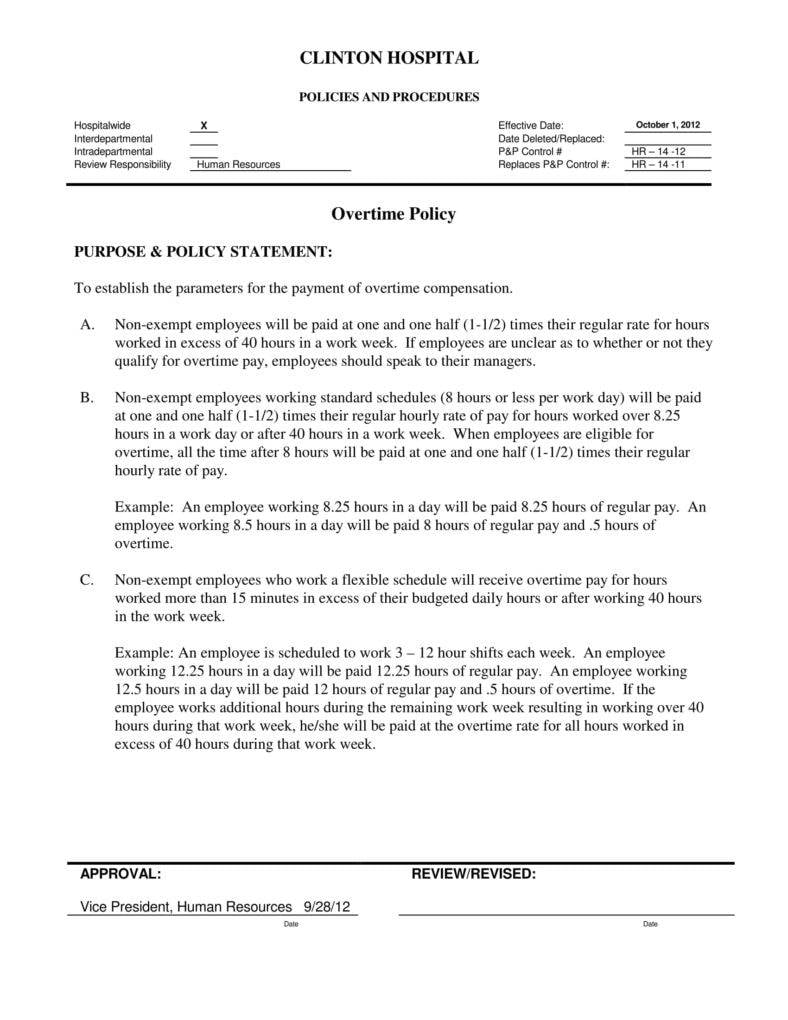
umassmemorialhealthcare.org
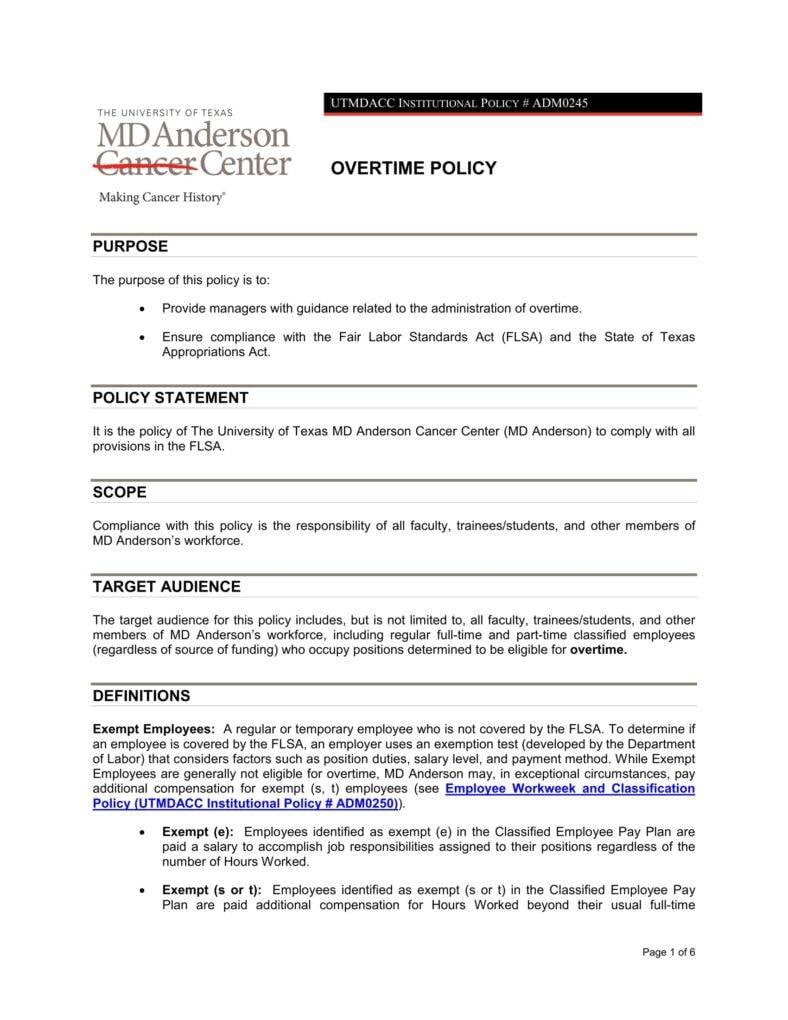
mdanderson.org
Make sure that everything about the format policy is easy to understand. Keep the policy short but simple enough that all of your employees know when they can apply for overtime and how they can do so. Try not to make more than two exceptions to the rules, and make sure that employees receive a copy of the policy. Once the entire professional policy has been established, you can place this in the employee handbook and update it regularly or as needed.
If you would like to learn more about overtime policies or anything else related to the topic (such as how to make use of overtime sheets), then all you have to do is go through our other articles. Have fun reading! You can also see more on Corporate Policy Templates.
Introduction: AI Video Generation Is No Longer Experimental What began as short, unstable demo clips has evolved into production-grade systems…

In today’s fast-paced digital world, efficiency and consistency are key to content creation, and this is where the power of…

Hospitality Induction Templates are structured guides created specifically for the hospitality industry to facilitate the onboarding process for new employees.…

Whether you are a business or an organization, it is important for you to keep track of your business bank…
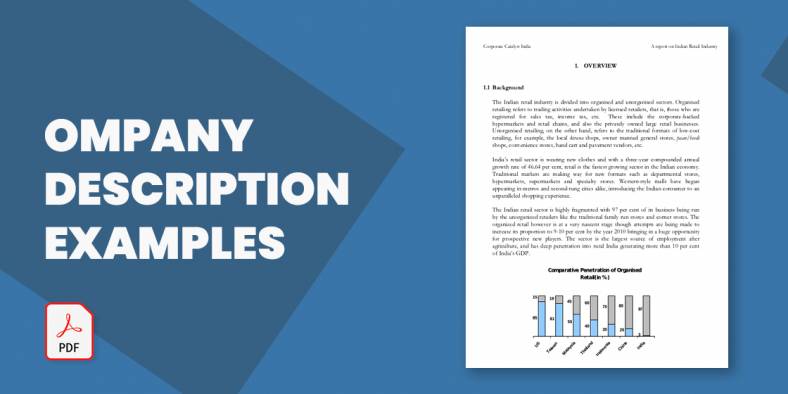
A Company Description provides meaningful and useful information about itself. The high-level review covers various elements of your small business…

A smartly designed restaurant menu can be a massive leverage to any food business.

Whether you need to keep neat records of received payments, or are looking for a template that helps you look…

The most widely recognized use for a sample letter of planning is the understudy who, after finishing secondary school, wishes…

The term “quotation” can refer to several things. While to some it may refer to a quote, which is proverbial.…